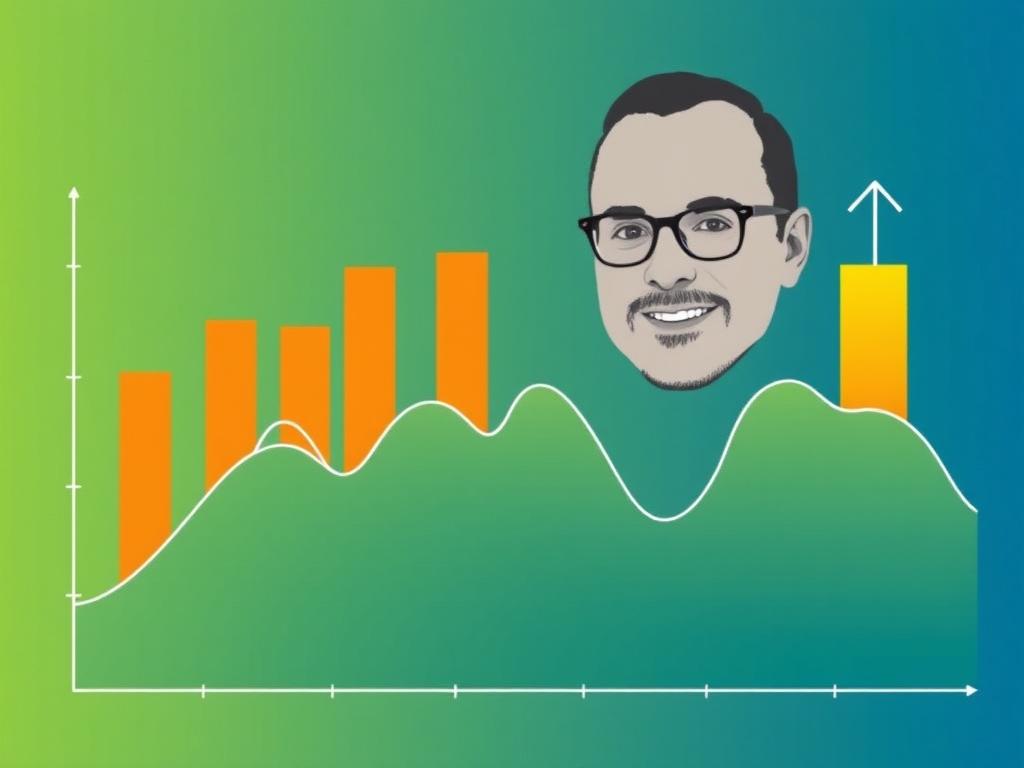
In today’s fast-paced and ever-evolving economic landscape, understanding market trends has become more crucial than ever. Daniel C. Moura’s analysis of current market trends offers valuable perspectives that help investors, businesses, and economists navigate these complexities with more confidence and clarity. His insights delve into the underlying factors that drive market fluctuations, providing a comprehensive framework to interpret the signals that markets send daily. Whether you’re a seasoned trader or simply curious about how global markets function, Moura’s approach presents a unique lens to grasp the dynamics at play.
To truly appreciate Daniel C. Moura’s analysis of current market trends, one needs to start with a foundational understanding of the key components influencing today’s markets. At the core are economic indicators such as inflation rates, employment statistics, and consumer spending patterns. Moura emphasizes how these indicators, when analyzed together, reveal trends that might not be evident from a single data point alone. This holistic perspective allows for a more nuanced forecast, highlighting potential risks and opportunities in both short-term and long-term horizons.
Understanding the Macro and Micro Market Drivers
Moura categorizes market drivers into macroeconomic and microeconomic factors, explaining how each influences market behavior differently yet interdependently. Macroeconomic factors include global events, monetary policies, and geopolitical developments. For example, interest rate decisions by central banks or shifts in trade policies can have ripple effects across multiple sectors, altering investment flows and consumer confidence. Conversely, microeconomic factors pertain to company-specific information such as earnings reports, management decisions, and product launches that directly affect stock prices and investor sentiment.
One of Daniel C. Moura’s key contributions is illustrating how these macro and micro elements interact dynamically. He argues that markets often overreact or underreact to news depending on the prevailing economic climate and investor psychology. By taking this into account, investors can avoid knee-jerk reactions and focus instead on underlying trends that indicate genuine shifts in market fundamentals.
Key Economic Indicators Highlighted in Moura’s Analysis
Daniel C. Moura identifies several economic indicators as essential tools in his analysis of current market trends. These indicators provide snapshots of economic health and are useful for building predictive models.
| Economic Indicator | Description | Significance in Market Trends |
|---|---|---|
| Inflation Rate | Measures the rate at which the general level of prices for goods and services rises. | High inflation often leads to increased interest rates, impacting borrowing costs and stock valuations. |
| Unemployment Rate | Percentage of the labor force that is jobless and actively seeking work. | Low unemployment signals economic strength, boosting consumer spending and market confidence. |
| Consumer Confidence Index (CCI) | Reflects how optimistic or pessimistic consumers are about the economy’s future. | High consumer confidence usually leads to increased spending, positively affecting markets. |
| Gross Domestic Product (GDP) | Measures total economic output within a country. | GDP growth is a primary indicator of market and economic health, guiding investment decisions. |
Sector-Specific Trends and Their Impacts

Another important aspect of Daniel C. Moura’s analysis of current market trends is his focus on sector-specific dynamics. Markets do not move uniformly; certain industries react differently based on economic cycles and innovations. Moura identifies technology, healthcare, and energy sectors as particularly influential in shaping overall market direction currently.
For instance, the technology sector continues to be a major driver due to rapid advancements in artificial intelligence, cloud computing, and cybersecurity. Moura points out that companies investing heavily in research and development tend to outperform their peers, reflecting the value of innovation in market leadership.
In contrast, the healthcare sector shows resilience through demographic changes like aging populations and growing healthcare demands, offering defensive investment qualities during volatile periods. Meanwhile, the energy sector, influenced heavily by geopolitical issues and the transition to renewable resources, presents both risks and opportunities, making it a closely watched segment among market analysts.
How Investors Can Use Moura’s Market Analysis

Utilizing Daniel C. Moura’s analysis of current market trends, investors can adopt a more strategic approach. Some practical applications include:
- Diversification across sectors: By recognizing which industries are likely to thrive or struggle, investors can allocate resources more effectively to manage risk and capture growth.
- Monitoring economic indicators: Keeping an eye on inflation, employment, and GDP can help anticipate market shifts before they fully materialize.
- Long-term focus: Moura encourages looking beyond short-term volatility to identify enduring market trends driven by structural changes.
- Adapting to geopolitical events: Understanding how global developments affect markets enables timely adjustments in investment positions.
Challenges in Interpreting Market Trends
Daniel C. Moura’s analysis also acknowledges the inherent challenges in interpreting market trends accurately. One of the biggest hurdles is the unpredictable nature of external shocks—events that suddenly upend markets, such as pandemics, natural disasters, or unforeseen political crises. Such occurrences test the robustness of any market model and require quick reassessment of prior assumptions.
Moreover, the sheer volume of data available today can lead to information overload, making it difficult to distinguish signal from noise. Moura stresses the importance of critical evaluation and avoiding confirmation bias when analyzing market data. Misinterpretation or selective attention to data can lead investors astray, underscoring the need for a disciplined and evidence-based approach.
Technological Tools Supporting Moura’s Analysis
In the age of big data and artificial intelligence, technology plays a vital role in enhancing Daniel C. Moura’s analysis of current market trends. Various tools and software have become indispensable in gathering, processing, and visualizing vast datasets. Some key technologies highlighted include:
- Data Analytics Platforms: These tools enable aggregation of economic and market data from multiple sources, facilitating pattern recognition and trend detection.
- Machine Learning Algorithms: By learning from historical data, algorithms can predict future market movements with more accuracy, identifying subtle correlations missed by human analysts.
- Real-Time Market Dashboards: These provide continuous updates, allowing investors to respond swiftly to changing market conditions.
Together, these technological advances allow Moura’s analytical frameworks to be more precise, timely, and actionable.
The Future Outlook in Moura’s Market Analysis

Looking ahead, Daniel C. Moura suggests that market trends will continue to be influenced heavily by digital transformation, climate change policies, and global economic integration. Companies and investors who adapt to these evolving realities with agility and insight are likely to succeed. Moura’s analysis stresses the importance of sustainability and ethical considerations emerging as key determinants of market valuations and reputational capital.
Moreover, Moura anticipates that volatility will remain a staple characteristic of markets, but those equipped with rigorous analysis tools and a clear understanding of underlying trends will be better positioned to capitalize on both risks and rewards. The ability to remain calm amid uncertainty and think strategically about market data will define successful investing in the years to come.
Conclusion
Daniel C. Moura’s analysis of current market trends provides a thorough and insightful framework that helps decode the complexities of today’s markets. By integrating macroeconomic and microeconomic factors, highlighting sector-specific developments, and leveraging advanced technological tools, Moura’s approach equips investors and businesses with the knowledge needed to navigate uncertainty confidently. His emphasis on data-driven, disciplined analysis reminds us that while markets are inherently unpredictable, thoughtful interpretation and strategic planning can turn trends into opportunities. As global markets continue to evolve, Moura’s perspectives remain essential for anyone seeking to understand and thrive in the dynamic world of finance.





Recent Comments